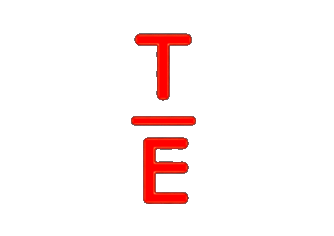

Sorting by the numbers
Objective sorting decisions
can help you market your Calves.
Eventually, someone sorts your cattle. It might be an order
buyer, or the feed- yard might sort them upon arrival. Some feedyards sort cattle into several market groups at reimplant time. And if a group remains intact from calving through slaughter, the packer sorts them on the rail based on grade, yield and carcass weights, with each group targeted to specific beef customers.
Some cow-calf producers, however, have learned that in a value-based
market, sorting calves into management and marketing groups can payoff on the ranch, whether the calves are in- tended for sale, retained ownership or a combination
of each.
One such producer is Mike Levi, who helps run Novotny Angus, a large commercial and seedstock operation near Winner, S.D. The ranch has years of experience with retained owner- ship and has kept extensive individual records since 1994. They knew their cattle per- formed well in the feedyard and on the rail, so in 1999 they decided to experiment with marketing some of their
fed cattle on the grid. Finding success in the value- based market, they decided to take the concept to another level by adopting a sophisticated process of sorting on the ranch and timing their shipments to the feedyard based on profitability.
The concept of sorting
calves into marketing groups is not new, and generations of ranchers have done
it to some degree. What has changed is the level of technology and automation available to make the sorting process more objective and accurate, and the motivation of an increasingly value-based market.
Pick your level
"Eyeballing" cattle to sort by size is the most basic, and probably the
least reliable method. Producers gain a considerable improvement in
accuracy and consistency by using objective measures such as scales and
hip-height measurements in their sorting decisions. At the next level of
sophistication, technology including electronic identification, integrated software for analysis and record keeping make sorting decisions faster, more objective and more focused on
long-term improvement and profitability.
Larry Hafer, sales manager for Midwest MicroSystems, L.L.C., says producers of
all sizes can benefit from sorting and target marketing in a value-based
industry. He lists several options that could prove the most profitable for sub-groups of a producer's calf crop.
These include: backgrounding on or off the ranch for
45 to 120 days; going to grass for a seasonal grazing program or extended grazing; marketing as yearlings; going directly to the feedlot for stepup to a finishing pro- gram; or going to the sale barn for immediate sale.
Midwest MicroSystems markets a sorting program called CowCOMM as part of their Cow Sense series
of herd-management software. The program, he says, allows the producer to link
electronic identification readers, scales and other devices such as an
electronic tape measure for determining hip height with a database containing individual records. The auto-sort function evaluates all the available data and assigns each animal to sort groups determined by the operator. The objective is to maximize value by putting calves together in groups that will finish together.
At Novotny Angus, Mr. Levi uses the software to sort calves for retained ownership with each group remaining on the ranch for backgrounding
periods ranging up to seven months. At weaning time last September,
crews brought the calves through the chute for sorting. Electronic scales under the chute recorded each animal's
weight, which the computer added to the calf's individual record while it calculated its average daily
gains since the last weighing. A crew member used a digital tape measure mounted above the chute to measure the animal's hip height, and a cable transmitted the figure to the computer, which calculated a frame score using a formula based on age and hip height, and added that to the record. The computer combined these calculations to assign the animal to a sort group. When they released the calf from the chute, the crew operated a set of gates to direct the calf to the appropriate holding pen with the rest of its group.
Uniform groups
Mr. Levi uses the system's "ECM" sort function, included in the CowCOMM program through an agreement with Micro Beef Technologies. The ECM, or Electronic Cattle Management system sorts cattle into uniform groups with similar project- ed finishing dates. Users also have the option to use a custom sort, for which they de- fine up to five specifications for
sorting calves, feeder cattle, cows, replacement heifers or bulls.
Mr. Levi sorted the operation's 2000 calf crop into three groups, based
on weight, frame score and rate of gain. The first group included 153 of the heaviest and fastest-gaining cattle. They shipped to Decatur
County Feedyard, Oberlin, Kan., on Jan. 15. The next group of261 steers and heifers shipped on March 1, and the final group of 162 in mid April.
Upon sorting, Mr. Levi says there were clear differences in size and frame type, and also in performance. "The first group," he says, "came off the cow gaining 2.5 pounds per day, compared
with an average of 2 pounds for the rest of the group." He targeted those for early shipment to the feedyard for what would likely be a relatively short time on feed.
He chose to feed the calves at Decatur County Feedyard as a means of capitalizing on uniformity and to acquire
individual performance and carcass data. Decatur County Feedyard uses the complete ECM system to sort cattle even further into management and marketing groups designed to optimize endpoints for profitability.
Feedyard owner Warren Weibert says that when ranchers sort their calves and send uniform groups to the feedyard, it helps improve the effectiveness of the feedyard's
own sorting system. Finished sort groups ship to the packer
proportionally more uniform, more predictable and more profitable than those from pens that
started out with high levels of variability.
Early results
Mr. Levi will be able to analyze the complete results of the strategy after the final sort groups close out of the feedyard later this summer. Some early data, however, serves to demonstrate the benefit of sorting
vs. marketing on averages. The feedyard sorts cattle at reimplant time based on a variety of factors, including weight, frame and backfat measured by ultrasound scanning. Of the 153 calves in the pen, the feedyard identified five marketing groups, including 8 head that needed to ship to the packer early to avoid discounts for yield grade 4 carcasses. Those 18 went to town on April 6, after only 80 days on feed. They grad- ed 55 percent Choice and two qualified for the Certified Angus Beef Program.
But the cattle weighed an average of just 1,099 pounds, and 78 percent finished with a yield grade 3 or higher. One carcass took a discount as a yield grade 4. Nevertheless, the group produced a net return of $717 per head, and Mr. Levi calculates $47 per head profit above what they would have earned on the feedercalf
market the day they shipped to the feedyard. A key point, though, is what sorting helped prevent.
"Just think of what would have happened if those 18 head were fed with the rest of the group for 145 days," Mr. Levi says. "Probably all 18 would have been yield grade 4s, dragging down the profitability of the entire pen." Or, if those calves had remained on the ranch until April with the final sort group, the feedyard
could hardly have fed them to market weight without producing yield
grade 4 carcasses. As it is, Novotny Angus made a profit on the cattle and has individual performance and carcass
data linking each calf back to its dam-data Mr. Levi plans to put to work mating those cows to bulls selected for better muscling.
From past experience, Mr. Levi knows the remaining cattle in the feedyard will continue to convert feed efficiently, finish at heavier market weights and grade between 65 and 75 percent Choice.
Looking toward the future,
Mr. Levi continues to advance the level of automation for the sorting
system and integration with other ranch data. This year, for example,
all the operation's calves have electronic ID tags. He acknowledges that Novotny Angus is a large operation with the facilities and manpower
needed to retain and background calves. But he believes objective
sorting can benefit other operations. They just need to make sorting decisions based on their facilities, availability of feed and their financial goals or limitations.
By John Maday










